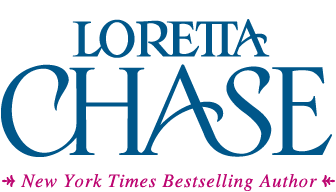I’ll be the first to admit that 1830s women’s fashions are baffling and not necessarily attractive to 21st century eyes. But for a writer, they offer solid gold material. The male characters marvel at what the women are wearing, although these men are mainly preoccupied with a strategy for getting the lady out of the clothing. And if a man gets lucky, and gets to test his strategy, the process makes for fun, because there are so many layers, and one must deal with tapes and buttons and hooks and eyes. Oh, and those sleeve puffs, too.
As I’ve mentioned more than once, I also like the way women made themselves so big with these ensembles—not simply the big sleeves and swelling skirts, but also their hair and their headwear. The 1700s had big hair, and so did the 1980s, but the knots and rolls and swirls of the 1830s are something else altogether. It’s amazing what they could do without our blow dryers and gels and pastes and lacquers. Instead, it’s pomatum (aka pomade, and made of grease of some kind and natural scents) and pins and various hairpieces. There’s nothing shy and retiring about these fashions. And none of the “less is more” way of thinking. It’s “more is more.” And I find it fascinating and stimulating.
Of course, when you read, you’ll picture the clothing in a way that’s appealing to you—and that’s as it should be. Reading let us use our imagination.
Even when I write descriptions, I usually keep details to a minimum. This is partly not to slow down the story but also to allow readers to make the mental image they want. For instance, in Chapter 2 of My Inconvenient Duke, Lady Alice wears “a redingote of deep onyx.” That’s it. Not that I’ve been able to discover where that came from. After searching my numerous books and the images on my hard drive, I’ve begun to suspect that I made it up or created one dress from a couple of fashion descriptions.
But a redingote is, basically, a close-fitting (from the waist up) dress that fastens all the way down the front, like a coat. And the color onyx is not mysterious, unlike so many other fashionable color names one encounters.
In the gallery below you’ll see most of the clothing mentioned in the book. Many of the images will be slightly distorted. This is because I photographed them from my copy of the 1832-33 The World of Fashion, in which the monthly magazine is bound. It’s very old, very thick, and I don’t have the right (i.e., expensive) kind of scanner for this kind of work.




























